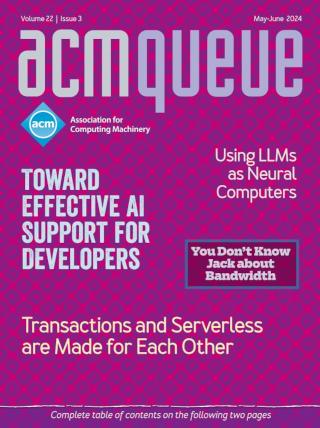
A Requirements Primer:
A short primer that provides background on four of the most important compliance challenges that organizations face today.
Many software engineers and architects are exposed to compliance through the growing number of rules, regulations, and standards with which their employers must comply. Some of these requirements, such as HIPAA, focus primarily on one industry, whereas others, such as SOX, span many industries. Some apply to only one country, while others cross national boundaries.
Box Their SOXes Off:
Being proactive with SAS 70 Type II audits helps both parties in a vendor relationship.
Data is a precious resource for any large organization. The larger the organization, the more likely it will rely to some degree on third-party vendors and partners to help it manage and monitor its mission-critical data. In the wake of new regulations for public companies, such as Section 404 of SOX, the folks who run IT departments for Fortune 1000 companies have an ever-increasing need to know that when it comes to the 24/7/365 monitoring of their critical data transactions, they have business partners with well-planned and well-documented procedures. In response to a growing need to validate third-party controls and procedures, some companies are insisting that certain vendors undergo SAS 70 Type II audits. These audits refer to an AICPA standard that sets forth the practice for evaluating the performance of outside service organizations.
Compliance Deconstructed:
When you break it down, compliance is largely about ensuring that business processes are executed as expected.
The topic of compliance becomes increasingly complex each year. Dozens of regulatory requirements can affect a company’s business processes. Moreover, these requirements are often vague and confusing. When those in charge of compliance are asked if their business processes are in compliance, it is understandably difficult for them to respond succinctly and with confidence. This article looks at how companies can deconstruct compliance, dealing with it in a systematic fashion and applying technology to automate compliance-related business processes. It also looks specifically at how Microsoft approaches compliance to SOX.
Complying with Compliance:
Blowing it off is not an option.
“Hey, compliance is boring. Really, really boring. And besides, I work neither in the financial industry nor in health care. Why should I care about SOX and HIPAA?” Yep, you’re absolutely right. You write payroll applications, or operating systems, or user interfaces, or (heaven forbid) e-mail servers. Why should you worry about compliance issues?
Facing the Strain:
A koder with attitude, KV answers your questions. Miss Manners he ain’t.
Dear KV, I’ve been working on a software team that produces an end-user application on several different operating system platforms. I started out as the build engineer, setting up the build system, then the nightly test scripts, and now I work on several of the components themselves, as well as maintaining the build system. The biggest problem Ive seen in building software is the lack of API stability. It’s OK when new APIs are added--you can ignore those if you like--and when APIs are removed I know, because the build breaks. The biggest problem is when someone changes an API, as this isn’t discovered until some test script--or worse, a user--executes the code and it blows up. How do you deal with constantly changing APIs?
Keeping Score in the IT Compliance Game:
ALM can help organizations meet tough IT compliance requirements.
Achieving developer acceptance of standardized procedures for managing applications from development to release is one of the largest hurdles facing organizations today. Establishing a standardized development-to-release workflow, often referred to as the ALM (application lifecycle management) process, is particularly critical for organizations in their efforts to meet tough IT compliance mandates. This is much easier said than done, as different development teams have created their own unique procedures that are undocumented, unclear, and nontraceable.
Rationalizing a Home Terabyte Server:
Self-indulgent, or a view of the future?
With 1 TB of RAID 5 storage, most of my friends believe I have really gone off the deep end with my home server. They may be right, but as in most things in life, I have gotten to this point through a rational set of individual upgrades all perfectly reasonable at the time. Rather than being overly indulgent to my inner geek, am I an early adopter of what will be the inevitable standard for home IT infrastructure? Here is my story; you be the judge.
Seeking Compliance Nirvana:
Don’t let SOX and PCI get the better of you
Compliance. The mere mention of it brings to mind a harrowing list of questions and concerns. For example, who is complying and with what? With so many standards, laws, angles, intersections, overlaps, and consequences, who ultimately gets to determine if you are compliant or not? How do you determine what is in scope and what is not? And why do you instantly think of an audit when you hear the word compliance? To see the tangled hairball that is compliance, just take a look at my company. It is on the hook for SOX, as we are a publicly traded company; for a number of banks for the PCI DSS, also known as Visa CISP; for HIPAA; for CA 1786; and for the European Union, its member countries, Japan, Korea, and a handful of other countries’ privacy and data security laws.
The Compliance Game:
Although complying with myriad regulations affecting information technology these days can feel like a chore, technology professionals now have an opportunity to leverage these efforts and create a proactive approach to IT governance. Tune into this month’s Queuecast as Kris Lovejoy, CTO of Consul, discusses with host Mike Vizard why companies must shift their focus on compliance to a new governance approach that will ultimately better serve a company’s needs.
Although complying with myriad regulations affecting information technology these days can feel like a chore, technology professionals now have an opportunity to leverage these efforts and create a proactive approach to IT governance. Tune into this month’s Queuecast as Kris Lovejoy, CTO of Consul, discusses with host Mike Vizard why companies must shift their focus on compliance to a new governance approach that will ultimately better serve a company’s needs.





